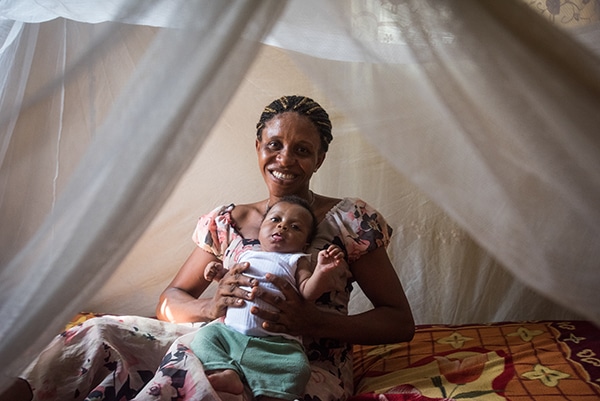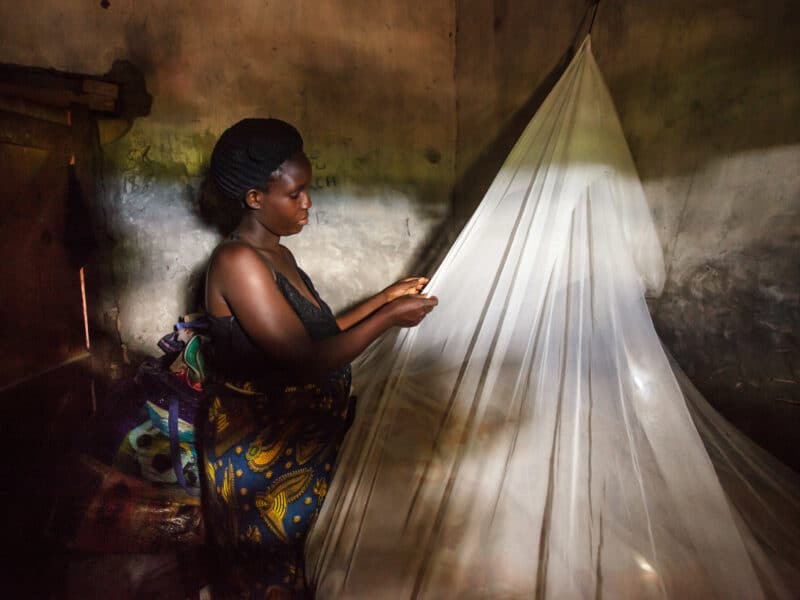Current interventions in place to protect people from malaria – most notably insecticide-treated mosquito nets and indoor spraying – work well, but new research from the Johns Hopkins Center for Communication Programs suggests that, in many places, more is needed to eliminate the threat.
After examining the behavior of both mosquitoes and humans in Zanzibar, a collection of islands off the coast of Tanzania in East Africa where malaria transmission is low, the researchers say that while there are opportunities to optimize net use that won’t be enough to end malaria transmission.
The findings, published in Malaria Journal, show that only two-thirds of mosquito bites were prevented by the use of treated nets hung over beds during the night and that nearly three-quarters of net users’ exposure to mosquito bites is actually happening outdoors.
“The number of malaria mosquitoes in Zanzibar is low compared to many other places, but the mosquitoes that are there are biting both indoors and outdoors, including during the evenings before people have gone to sleep under their nets,” says CCP’s April Monroe, PhD, the leader of the study. “There are many gaps to be addressed and this is why it is so important to look at both mosquito behavior and human behavior. That is how we figure out where and when we need to focus our energy.”
Treated bed nets are the single most effective tool available for reducing illness and death from malaria, accounting for 68 percent of cases prevented since 2000. Still, in 2018 there were 228 million malaria cases that led to 405,000 deaths worldwide, according to the World Health Organization.
To better understand factors that may contribute to remaining low-level malaria transmission in Zanzibar, the researchers conducted both human behavioral and entomological research between December 2016 and December 2017 in 135 randomly selected households across six administrative wards. The study included household surveys, structured household observations of nighttime activity and sleeping patterns, and indoor and outdoor mosquito collection.
As for the mosquitoes themselves, the researchers found that 92 percent of female Anopheles mosquitoes (the ones that can cause a malaria infection) were caught in the rainy season compared to eight percent in the dry season, while 72 percent were caught outdoors compared to 28 percent indoors.
Variation in net use across sites and seasons suggests that additional gains could be made through targeted social and behavior change interventions. But even for net users, gaps in protection remain, with a majority of exposure to bites occurring outdoors before going to sleep.
Monroe says that supplemental interventions targeting outdoor exposure to malaria carriers is needed. This may include mosquito repellents for protecting individuals and groups or targeting the open water where the mosquitoes breed.
While the Zanzibar findings may be applicable to other places where there is low malaria transmission, Monroe and her colleagues also have a second paper in Malaria Journal which outlines a road map for people in other countries to measure mosquito and human behavior in order to find and address gaps in malaria prevention in their own context.
“Different places will require different combinations of interventions,” she says. “We offer an approach for collecting, consolidating and interpreting data so that malaria programs have the information they need to address the gaps and continue making progress.”
“Patterns of human exposure to malaria vectors in Zanzibar and implications for malaria elimination efforts” was written by April Monroe, Dickson Msaky, Samson Kiware, Brian B. Tarimo, Sarah Moore, Khamis Haji, Hannah Koenker, Steven Harvey, Marceline Finda, Halfan Ngowo, Kimberly Mihayo, George Greer, Abdullah Ali and Fredros Okumu.
“Methods and indicators for measuring patterns of human exposure to malaria vectors” was written by April Monroe, Sarah Moore, Fredros Okumu, Samson Kiware, Neil F. Lobo, Hannah Koenker, Ellie Sherrard-Smith, John Gimnig and Gerry F. Killeen.





